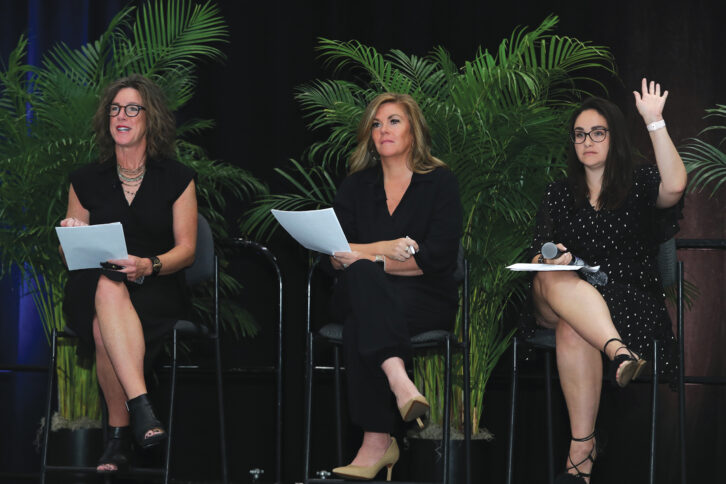Encouraging budding designers to become more familiar with the AV technology that is becoming increasingly essential in their professional world.

Sarah Dresher of LIT encouraged attendees to utilize manufacturer reps as a valuable resource for support, as well as to reach out to organizations like the Home Technology Association and CEDIA. “One thing we can count on with technology is that it’s forever changing,” she said, “so continuing to educate yourself is the best way to start getting involved.”
McGregor Bennett added that the growing number of technology experience centers can help designers learn about options currently available on the market. “Many of the integrators in the community are starting to build really beautiful experience centers,” explained Bennett. “These are often open and available to you in the design/build community to bring your clientele in and see what’s possible with technology without having to commit at the time.”
However, McGregor Bennett cautioned emerging designers that communication with integrators is key. “I want to make sure you understand that the integrators are there to help you, support you, and collaborate with you,” asserted Bennett. “They are not there to take over the project. By all means, if you get that sense, it’s a conversation you need to have, so they can understand the roles in the room and the hierarchy.”
Turning the discussion toward how the design/build community are leveraging technology into their projects, McGregor Bennett asked Dresher and Elizabeth Lord-Levitt of Built4Design Residential Academy to provide insight into how they are seeing residential tech used across projects. “I think what’s really important to understand is that, as a designer, AV integration can be on any level in regards to budget,” explained Lord-Levitt. “There’s a big financial component to it, but not only fancy homes have AV integration. It can be applicable to any project—it may be a smaller investment amount, but it’s still really important.”
Lord-Levitt also reminded attendees that clients don’t know what they don’t know. “Your goal as a designer is to be their advocate and say, ‘Is this important to you? This is a great resource to determine if it is, and if it fits into your budget.’”

